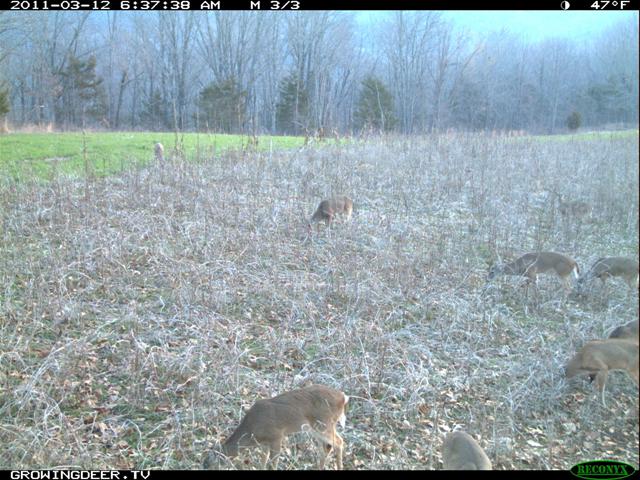Big Bucks are Usually Seen Where the Combines Roam
Filed under: Food Plots, Hunting Blog
I was in Kansas turkey hunting last week and visited with a friend there that asked about maximizing the potential of his deer herd. He is a very talented deer manager and an incredible hunter. His stalking skills are by far the best I’ve ever witnessed. He makes me sound like an elephant going through the woods. He lives in an area where combines roam the country side every fall. After getting to know his property, I felt there was one component missing from his deer management practices: standing grain during the winter.
Standing grain provides a great source of digestible carbohydrates to deer and other wildlife. Carbohydrates equate to energy and energy is often the most limited factor in a deer’s diet. Most folks only consider protein when producing crops/habitat management for deer. This is a mistake if the goal is to allow deer to express most of their genetic potential.
Most whitetail hunters realize that most record book bucks are harvested in the agricultural regions of the Midwest. However, they may not realize one of the primary reasons why this trend occurs is because of the quality soils and the excess of grain produced and left available through the winter as combines are not 100% efficient.
The Proving Grounds is located in the very southern portion of Missouri – about 20 miles from the Arkansas border. The world class deer harvested in northern Missouri are direct ancestors from the “dog-sized deer” in southern Missouri, as Missouri primarily restocked deer into the northern (grain producing) counties from the Ozark Mountains of southern Missouri. Many folks wrongly assume there is a genetic difference between the deer north of the Missouri River and the smaller deer in the Ozark Mountains of southern Missouri. The difference is that I’ve never seen a combine in the two counties that split The Proving Grounds.
By producing good quality forage crops during the summer (protein) and grain crops (corn and soybeans) left standing during winter, I’m able to produce northern Missouri quality deer in counties where there has never been a Pope and Young or Boone and Crocket buck recorded (Stone and Taney Counties, Missouri).
The take home message is that folks almost anywhere can allow deer in their neighborhood to express more of their antler growth potential. One of the keys is to provide a good source of energy (grain) through the winter months. Standing soybeans and corn are the least expensive and healthiest method to provide grain to the local wildlife population if you don’t live where combines are a common sight. Even if you live where combines roam, you may be an island where there is no grain, and the local herd may not express much more potential than their distant relatives that don’t ever see a combine.
Growing Deer together,
Grant




